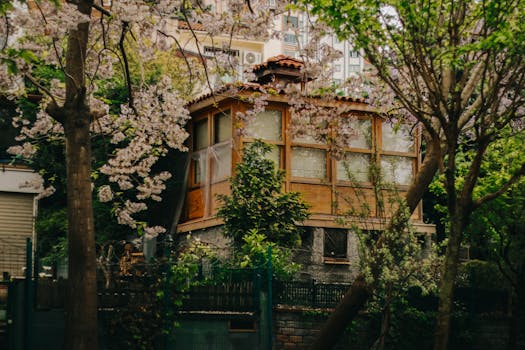
Urban Green Spaces: The Future of Outdoor Living in European Cities by 2025
Urban Green Spaces are becoming increasingly important in European cities, and for good reason. As the world becomes more urbanized, the need for green spaces in cities is growing. Urban Green Spaces are not just aesthetically pleasing, but they also provide numerous benefits for both the environment and the people living in these cities. In this article, we will explore the future of outdoor living in European cities and how urban green spaces are playing a crucial role in shaping this future.
Introduction to Urban Green Spaces
Urban green spaces refer to any area in a city that is covered in vegetation, such as parks, gardens, and green roofs. These spaces are essential for maintaining ecological balance in urban areas and provide numerous benefits, including air and water filtration, noise reduction, and habitat creation for wildlife. Additionally, urban green spaces have been shown to have a positive impact on human health, reducing stress levels and improving mental well-being.
The Benefits of Urban Green Spaces
There are numerous benefits to urban green spaces, including:
- Improved air quality: Urban green spaces help to remove pollutants from the air, improving air quality and reducing the risk of respiratory problems.
- Reduced noise pollution: Green spaces can act as a buffer, reducing noise pollution and creating a more peaceful environment.
- Increased biodiversity: Urban green spaces provide a habitat for wildlife, increasing biodiversity and supporting local ecosystems.
- Improved mental health: Spending time in green spaces has been shown to reduce stress levels and improve mental well-being.
- Enhanced community engagement: Urban green spaces can serve as community hubs, fostering social connections and a sense of community.
The Future of Outdoor Living in European Cities
By 2025, European cities are expected to be even more urbanized, with a growing need for green spaces. In response to this, many cities are incorporating urban green spaces into their urban planning strategies. This includes the creation of new parks, gardens, and green roofs, as well as the restoration of existing green spaces.
Case Studies: Successful Urban Green Space Initiatives in European Cities
Several European cities are already leading the way in terms of urban green space initiatives. For example:
- Stockholm, Sweden: The city has implemented a range of green space initiatives, including the creation of new parks and gardens, and the restoration of existing green spaces.
- Copenhagen, Denmark: The city has incorporated green roofs into its urban planning strategy, with many buildings featuring rooftop gardens and green spaces.
- Amsterdam, Netherlands: The city has created a range of green spaces, including parks, gardens, and green roofs, and has implemented initiatives to increase community engagement and social connections in these spaces.
Challenges and Opportunities for Urban Green Spaces in European Cities
While there are many benefits to urban green spaces, there are also challenges to be addressed. These include:
- Funding: Creating and maintaining urban green spaces can be costly, and funding can be a challenge.
- Space: In densely populated cities, finding space for green spaces can be a challenge.
- Community engagement: Encouraging community engagement and social connections in green spaces can be a challenge.
Conclusion
Urban green spaces are playing a crucial role in shaping the future of outdoor living in European cities. As the world becomes more urbanized, the need for green spaces in cities is growing. By incorporating urban green spaces into urban planning strategies, cities can improve air and water quality, reduce noise pollution, and increase biodiversity. Additionally, urban green spaces can have a positive impact on human health, reducing stress levels and improving mental well-being. As we look to the future, it is clear that urban green spaces will continue to play an essential role in creating sustainable, healthy, and thriving cities.






